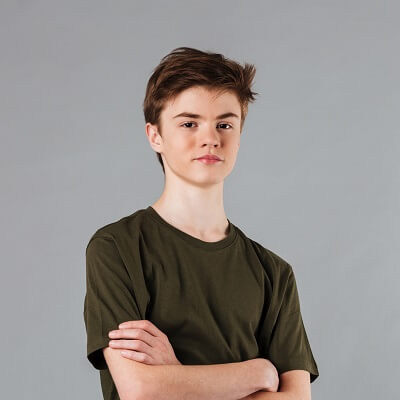Velká Británie
6. 7. 2021 2021-07-06 10:48Velká Británie
Great Britain
- a) Geography
- situated in the British Isles
- It consists of three parts: England, Wales and Scotland
- The British Isles is the general name for the major island, Ireland, the Hebrides, the Orkneys, the Shetlands and many others
- The British Isles are situated in the north-east of the Atlantic Ocean
- From Europe they are divided by the British Channel
- Its neighbours are Ireland to west and France to south-east
- It covers the area of 244,755 sq. kms.
- England is mostly rolling land. The main mountain regions here are the Cornish Heights, the Pennines for example. The Cheviot Hills are on the border between England and Scotland. The Highlands of Scotland are the highest mountains in Britain (with the biggest mountain Ben Nevis – 1343 m). The highest mountain in Wales is Snowdon (1085 m).
- The longest river is the Severn and the biggest river is the Thames.
- The greatest number of lakes can be found in Northern Scotland and in the Lake District.
- Many tourists visit Windermere Lake. But the largest lakes are, however, in Northern Ireland: Lough Neagh, Lough Erne
- Most famous lakes are Loch Lomond and Loch Ness in Scotland.
- The climate is mild but unpredictable. Winter temperatures are higher and summer temperatures are lower.
- b) Demographics
- Population is approximately 57,000,000
- In Britain we can find the following ethnic groups: English, Scottish, Irish, Welsh, Ulster and others.
- c) History
The Celts arrived 2500 to 3000 ago.
In 43 BC was Britain established as a province of the Roman Empire.
After the withdrawal of Roman legions in 410 the waves of the Jutes, the Angles and the Saxons arrived from German lands. They drove Celtic people into the mountains of Wales and Scotland and fought with the Danes from the 8th to the 11th centuries. The most famous Saxon king was Alfred the Great. In the 11th century the Danish King Canute made Britain part of his Scandinavian Empire.
The last successful invasion was by French speaking Normans led by William, Duke of Normandy, who became William the Conqueror after defeating the Saxon King Harold in the Battle of Hastings in 1066.
The opposition by nobles forced King John to sign Magna Carta in 1215, a guarantee of rights and the rule of law.
English dynastic claims to large parts of France led to the Hundred Year’s War (1338-1453) and the defeat of England. A long civil war,the War of the Roses, between the House of Lancaster (whose emblem was a white rose) and the House of York (red rose), lasted 1455-1485 and ended with the establishment of the powerful Tudor House. Religious independence from Rome was secured when the Church of England was separated from the authority of the Pope in 1543 by King Henry VIII.
Under Queen Elizabeth I. Britain became a major sea power.
Scotland was united with England in 1603.
A struggle between Parliament and the Stuart kings led to a bloody Civil War (1642-1649). The country was divided between the supporters of Charles I., who wanted to rule absolutely, and the supporters of Parliament, who wanted to limit the King’s powers. Finally Oliver Cromwell established a republic and King Charles was beheaded. The monarchy was restored in 1660 but the “Glorious Revolution” in 1688 confirmed the sovereignty of Parliament.
Technological innovations (especially the invention of steam engine by James Watt in 1769, steam locomotive developed in 1814 by George Stephenson) led to the Industrial Revolution (1760s-1850s).
The 13 North American colonies were lost, but replaced by growing empires in Canada and India.
Large parts of Africa and Asia were added to the empire during the reign of Queen Victoria. Through victorious World War I Britain suffered huge casualties and economic losses.
The country suffered major bombing damage in World War II, but held out against Germany after the fall of France in 1940.
- d) The economy
- The main industries are those which developed during the Industrial revolution: cool, textile, wool, iron and steel, shipbuilding and engineering
- New industries developed in 20th century – chemical, aircraft and electrical industries
- The main areas of industrial concentration are the following: Yorkshire, Greater Manchester, Greater London, south Wales.
- There are petroleum and gas fields in the North Sea, too. Other resources are less important, e.g. sand, sandstone, chalk, salt.
- Agriculture production consists mainly of livestock production included dairy farms, sheep and poultry farms. There is a production of cereals, potatoes, sugar beet, fruit and vegetables.
- e) Political system
- Great Britain is a constitutional monarchy with the Queen as the head of state
- For years it has been Queen Elizabeth II.
- Britain is divided into four parts: England, Wales, Scotland and Northern Ireland.
- Parliament consists of two houses – the House of Lords(hereditary for life) and the House of Commons. Election takes places after five years. Twenty of the ministers form the Cabinet.
- f) National Flag and Anthem
- British national flag is sometimes called “Union Jack”
- It symbolizes the Union of England, Scotland and Ireland
- Each country has its cross in the flag: England has St. George’s Cross, Scotland has St. Andrew’s Cross and Ireland has St. Patrick’s Cross.
- National anthem is “God Save the Queen!”
- g) The capital – London
- London is the capital of the United Kingdom of Great Britain and Northern Ireland
- At the same time it is the largest city in the country, the residence of the monarch, the representatives of the Church of England, Parliament etc.
- London is home to about 9 million inhabitants
- 9thlargest city in the world.
- It was founded as a Roman settlement and the great fire in 1666 destroyed almost all the city.
Buckingham Palace – the London home of the Queen
Trafalgar square – famous for its pigeons; there is a statue of
Admiral Nelson
Piccadilly Circus – is the meeting point of six main streets
St. Paul’s Cathedral – was built to replace old St. Paul’s which was
burnt down in the Great Fire in 1666
The Houses of Parliament – consists of he House of Commons and the
The Big Ben
House of Lords
Westminster Abbey – since 1066 all English kings and queens have
been crowned here
10 Downing street – official home of British Prime Ministers
Oxford street – most famous shopping street
The Tower – was built in the 11th century; many important
personalities were arrested and executed here; at the
present time it houses a museum
Tower Bridge – it has two characteristic towers with a height of 65m
- h) Some writers
William Shakespeare, John Milton, Jonathan Swith, Daniel Defoe, Walter Scott, Charles Dickens, Oscar Wilde, G.B. Shaw
In 20th century – Agatha Christie, Samuel Beckett (Nobel Prize for literature), Arthur C. Clarke
Vocabulary:
withdrawal – ústup
unpredictable – nepředvídatelný
defeat – porážka
restore – obnovit
confirm – potvrdit
engine – stroj
livestock – dobytek

Koukni co o nás studenti říkají
Už od roku 2013 se staráme, aby naše materiály byly pro uživatele kvalitnější a přehlednější.
Díky za materiály. Ve škole jsem dlouho chyběla, ale naštěstí jsem našla všechno tady.

Klárka
Studentka základní školyHrozně moc zápisků a materiálů do školy. Když je Covid, tak se to ohromně hodí!

Robert
Student gymnáziaMaturitní otázky jsou skvělé!!!




